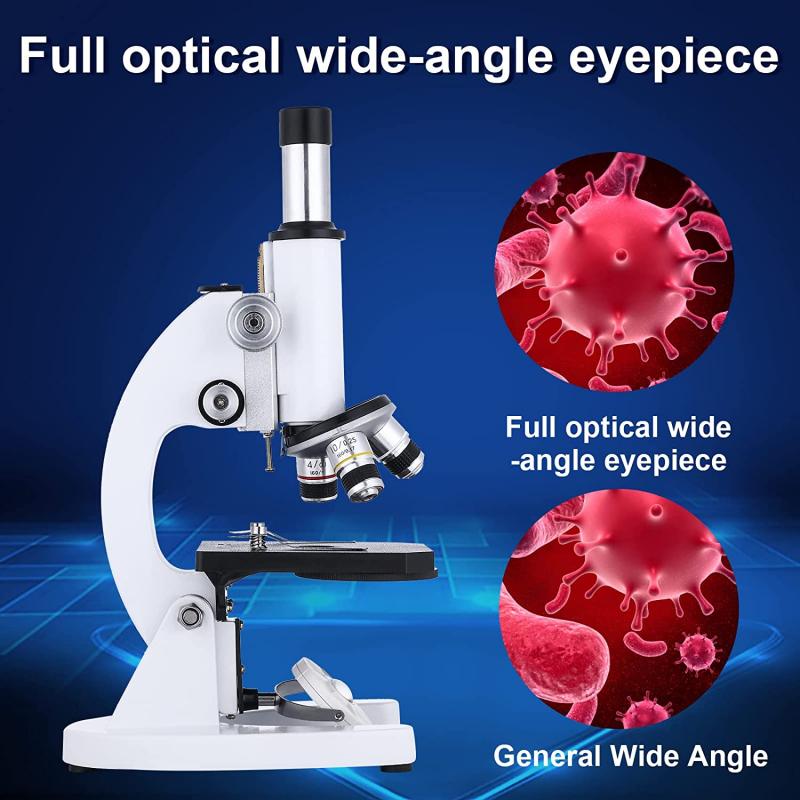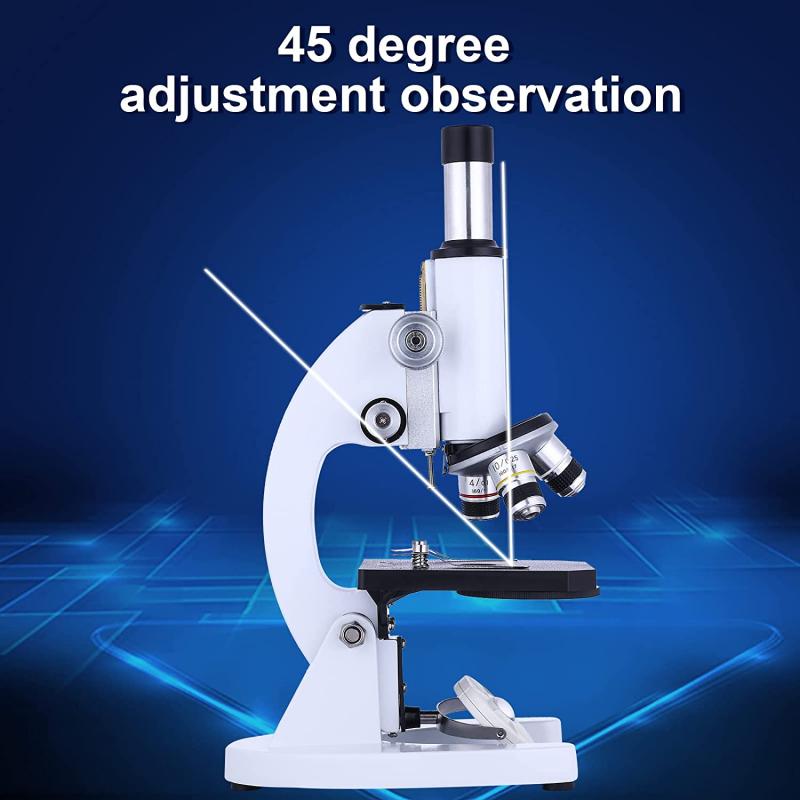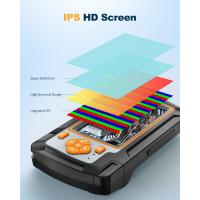Can A Microscope See An Atom ?
No, a traditional microscope cannot see an atom. Atoms are much smaller than the wavelength of visible light, which limits the resolution of optical microscopes. However, there are specialized microscopes, such as scanning tunneling microscopes and atomic force microscopes, that can visualize atoms by using different techniques.
1、 Limitations of Optical Microscopy in Observing Atoms
Limitations of Optical Microscopy in Observing Atoms
No, a traditional optical microscope cannot directly see individual atoms. The resolution of an optical microscope is limited by the wavelength of visible light, which is around 400-700 nanometers. This means that the smallest objects that can be resolved by an optical microscope are on the scale of hundreds of nanometers, which is much larger than the size of an atom.
To observe atoms, scientists have developed advanced techniques such as scanning tunneling microscopy (STM) and atomic force microscopy (AFM). These techniques use a sharp probe to scan the surface of a sample and detect the interaction between the probe and the atoms. By measuring this interaction, it is possible to create images of individual atoms.
In recent years, there have been advancements in optical microscopy techniques that have pushed the limits of resolution. Super-resolution microscopy techniques, such as stimulated emission depletion (STED) microscopy and structured illumination microscopy (SIM), have achieved resolutions below the diffraction limit of light. These techniques use clever tricks to overcome the diffraction barrier and provide higher resolution images. However, even with these advancements, directly visualizing individual atoms is still beyond the capabilities of optical microscopy.
To directly observe atoms, other techniques such as electron microscopy or scanning probe microscopy are more suitable. Electron microscopes use a beam of electrons instead of light, which has a much smaller wavelength, allowing for higher resolution imaging. Scanning probe microscopy techniques, such as STM and AFM, can also provide atomic-scale resolution by detecting the interaction between a probe and the atoms.
In conclusion, while optical microscopy has its limitations in observing atoms, advancements in other microscopy techniques have allowed scientists to directly visualize individual atoms using alternative methods.

2、 Advancements in Electron Microscopy for Atomic Imaging
Advancements in Electron Microscopy for Atomic Imaging have made it possible to visualize atoms using a microscope. Traditional light microscopes are limited by the wavelength of visible light, which is too large to resolve individual atoms. However, electron microscopes use a beam of electrons instead of light, allowing for much higher resolution imaging.
In recent years, significant progress has been made in electron microscopy techniques, enabling scientists to observe individual atoms and even their atomic structures. One such technique is transmission electron microscopy (TEM), which involves passing a beam of electrons through a thin sample. By manipulating the electron beam and using advanced detectors, researchers can capture images of atoms and their arrangements.
Another technique, scanning transmission electron microscopy (STEM), allows for atomic resolution imaging by scanning a focused electron beam across a sample. This method can provide detailed information about the atomic structure, composition, and even chemical bonding of materials.
Furthermore, advancements in aberration-corrected electron microscopy have greatly improved the resolution and clarity of atomic imaging. By correcting for aberrations in the electron beam, scientists can achieve sub-angstrom resolution, enabling the visualization of individual atoms and their movements.
It is important to note that while electron microscopy has made significant strides in atomic imaging, there are still limitations. The interaction of the electron beam with the sample can cause damage, and the imaging process itself can alter the atomic structure. However, researchers continue to refine techniques and develop new approaches to overcome these challenges.
In conclusion, advancements in electron microscopy have revolutionized atomic imaging, allowing scientists to see individual atoms and their arrangements. With ongoing research and development, the field of electron microscopy is expected to continue pushing the boundaries of atomic imaging, providing valuable insights into the fundamental building blocks of matter.

3、 Scanning Tunneling Microscopy: Visualizing Individual Atoms
Scanning Tunneling Microscopy (STM) is a powerful technique that allows scientists to visualize individual atoms. Unlike traditional optical microscopes, which use light to magnify objects, STM operates on the principles of quantum mechanics and electron tunneling.
In STM, a sharp metal tip is brought very close to the surface of a sample. A small voltage is applied between the tip and the sample, creating a tunneling current. By scanning the tip across the surface and measuring the tunneling current, a three-dimensional image of the surface can be generated with atomic resolution.
With STM, it is indeed possible to see individual atoms. The technique has been used to image a wide range of materials, including metals, semiconductors, and even biological molecules. By manipulating the tip, scientists can also move individual atoms and molecules, opening up possibilities for nanoscale fabrication and manipulation.
It is important to note that STM can only visualize the surface of a material. It cannot directly "see" the internal structure of an atom. However, by combining STM with other techniques such as atomic force microscopy and scanning electron microscopy, scientists can gain a more comprehensive understanding of atomic-scale phenomena.
In recent years, advancements in STM technology have allowed for even higher resolution imaging. For example, a team of researchers at IBM developed an STM that can image individual atoms with sub-angstrom resolution, enabling the visualization of chemical bonds within molecules.
In conclusion, while a traditional optical microscope cannot see individual atoms, scanning tunneling microscopy has revolutionized our ability to visualize and manipulate atoms at the atomic scale. It continues to be a valuable tool in various fields of science and nanotechnology.

4、 Atomic Force Microscopy: Probing Atomic-Scale Surface Topography
Can a microscope see an atom? The answer is yes, but with some limitations. Traditional optical microscopes, which use visible light, cannot directly visualize atoms due to their small size and the diffraction limit of light. However, there are advanced techniques such as electron microscopy and scanning probe microscopy that can achieve atomic-scale resolution.
One such technique is Atomic Force Microscopy (AFM), which was developed in the 1980s. AFM uses a tiny probe with a sharp tip to scan the surface of a sample. As the tip moves across the surface, it experiences forces that are used to create a topographic map of the sample. AFM can achieve atomic-scale resolution by scanning the tip over the surface with sub-nanometer precision.
In recent years, AFM has made significant advancements, allowing scientists to not only visualize atoms but also manipulate them. For example, researchers have used AFM to move individual atoms and molecules, creating nanostructures with precise control. This has opened up new possibilities in fields such as nanotechnology and materials science.
It is important to note that while AFM can visualize atoms, it does not provide direct imaging of the electron cloud surrounding the atom. Techniques such as scanning tunneling microscopy (STM) and transmission electron microscopy (TEM) are better suited for studying the electron distribution within an atom.
In conclusion, while traditional optical microscopes cannot directly visualize atoms, techniques like AFM have revolutionized our ability to see and manipulate atoms at the atomic scale. These advancements have greatly contributed to our understanding of materials and have opened up new avenues for scientific research and technological development.































There are no comments for this blog.